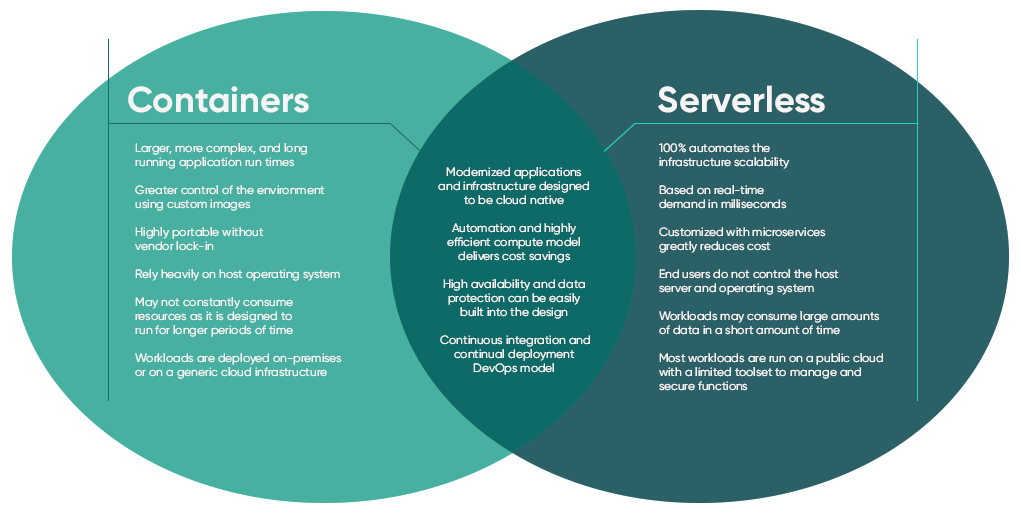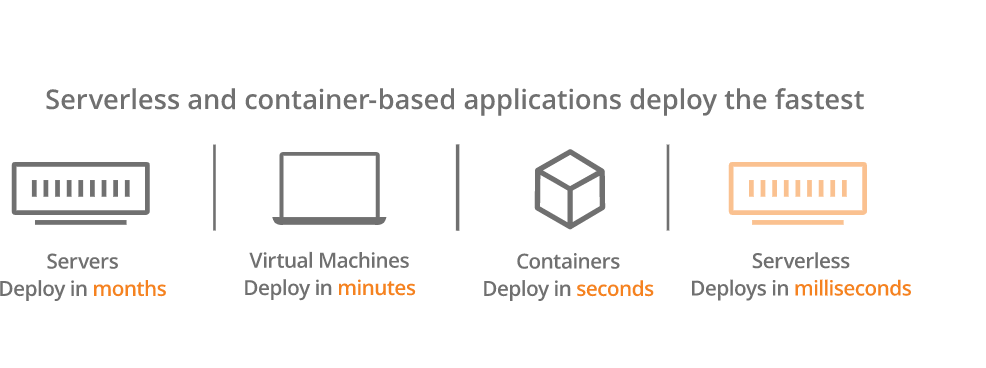
Serverless Computing vs Containers
Serverless storage falls under the rubric of a relatively new technology known as serverless computing. Serverless computing doesn’t replace containers, any more than containers replaced virtual machines (VMs). They all have their use cases.
Containers are more lightweight and flexible than VMs. This is in part because containers lower their overhead by sharing operating systems and attendant resources, unlike VMs. They enable applications to be broken into constituent components, allowing software to be developed on a more granular level.
A component of an application can be updated or modified without rewriting the entire app. Moreover, these micro services can be reused in other application stacks.
This post is designed to provide more insight into the world of Serverless Computing. We hope it helps you better understand the difference between serverless computing and containers. If you have any questions after reading this post, please feel free to reach out to us anytime.
Serverless Computing Explained
Serverless computing is event-driven code. It provides brief, simple functionality in an application stack such as acquiring data, performing a calculation, sending a notification, or triggering another event. After the code is executed, it stands down, making it ephemeral. You pay only when the function is executed and for nothing else. It’s a consumption-based model. You don’t incur costs for resources you may or may not need in the future.
Your service provider, often a cloud vendor, is responsible for maintaining the stack and its technologies; you’re responsible solely for extracting business value from the application, not all the traditional IT concerns. You gain elasticity and efficiencies that monolithic applications can’t come close to matching. You no longer must worry about capacity planning or the expense of over-provisioning.
What Makes a Storage Service Truly Serverless?
Don’t be fooled by the name. There are servers underlying serverless computing. You simply don’t see them. Or manage them. Infrastructure is the headache of your service provider, which allows you to focus your time, attention, and resources on your business.
If serverless functions exist only long enough to execute their codes, where do persistent data reside? This is where serverless storage comes in. Like serverless computing, serverless storage means that users or the owners of the data don’t have to worry about buying, leasing, provisioning, operating or maintaining servers and network connections.
The service provider does this. Owners can focus their time and resources on business-specific applications rather than the infrastructure underlying their data troves. All storage resources scale up or down, depending on your needs, and you pay only for what you use. Again, pay as you go.
The Rise of Serverless Computing

We don’t live in a world where it’s either containers or serverless storage. They both have their strengths and weaknesses and can complement each other.
Use containers when you need functionality that endures beyond seconds or minutes. Don’t use serverless on persistent applications. Applications that incur a lot of usage time in a consumption pricing environment can quickly become more expensive than containerization.
Because serverless storage is billed by usage, you never pay for idle capacity. The rapid adoption of serverless services will inevitably give rise to serverless application development. Applications then will be more cost-efficient and scalable to build and will provide enterprises with much greater agility.
Looking for a balanced storage or network solution? JetStor brings flash storage to a broad audience. We have been designing and building reliable systems since 1994, and we put our expertise to work with local partners. From your home office to the cloud and beyond, we offer solutions that are tailored to your needs.
- FC SAN Storage
- Host Bus Adapters HBAs
- Disaster-Recovery Software
- Network Switches – FC / IP SAN
- JBOD Enclosure for Data Storage
- iSCSI / Hybrid / All Flash Storage
- Direct Attached Storage Products
- Network Attached Storage Devices – Unified Storage
JetStor launches affordable all-flash and hybrid-flash storage. A hybrid array combines flash memory with hard disk drives to boost IOPS and reduce latency. SSDs are undoubtedly faster than traditional hard drives. Due to hybrid solutions being comprised of a variety of workloads, performance numbers will vary, so IT managers and professionals shouldn’t expect to see the same results everywhere.
